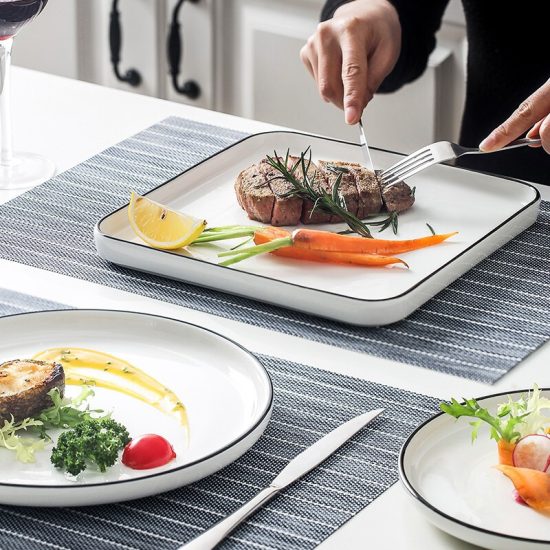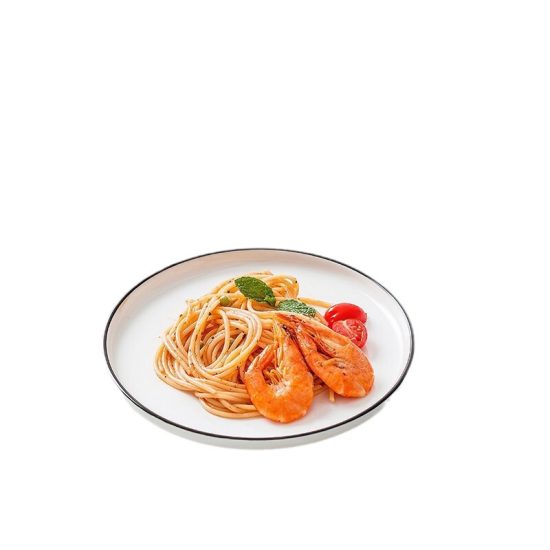- Consider your lifestyle and needs: Before diving into the specifics of tableware, think about your lifestyle and dining habits. Do you frequently host formal dinner parties or prefer casual gatherings? Do you have children or pets? Understanding your needs will help determine the durability, style, and functionality of the tableware you choose.
- Types of tableware:
a. Dinner Plates: These are the main plates used for serving the main course. Consider the size, shape, and material. Standard dinner plates are typically 10 to 12 inches in diameter, but larger or smaller options are available.
b. Salad Plates: These smaller plates are used for serving salads, appetizers, or desserts. They are usually 7 to 8 inches in diameter.
c. Soup Bowls: If you enjoy serving soups or stews, consider investing in bowls with wider rims and a deep base to prevent spills. Make sure they are microwave and dishwasher safe.
d. Side Plates: These small plates are used for serving bread, butter, or side dishes. They are typically 6 to 7 inches in diameter.
e. Cups and Saucers: Choose between teacups or coffee cups depending on your preference. Look for matching saucers that are large enough to accommodate spoons or small snacks.
f. Glassware: Consider the type of glassware you need, such as water glasses, wine glasses, and tumblers. Opt for sturdy and versatile options that can withstand regular use and complement different table settings.
g. Flatware: This includes forks, knives, and spoons. Look for sets made from high-quality stainless steel for durability. Consider the design and weight of the flatware to ensure it feels comfortable in your hand.
h. Serving Pieces: These include platters, serving bowls, gravy boats, and other specialty items for presenting and serving food. Choose pieces that match your tableware and complement your serving style.
- Materials:
a. Porcelain: Porcelain is a classic choice for tableware due to its elegance and durability. It is lightweight, translucent, and can be either plain or decorated with patterns.
b. Bone China: Bone china is known for its delicacy, translucency, and strength. It is made from bone ash, feldspar, and china clay. Bone china tableware is often more expensive but offers a luxurious and refined look.
c. Stoneware: Stoneware is a durable and versatile option, suitable for everyday use. It is heavier than porcelain or bone china and comes in a variety of colors and finishes.
d. Earthenware: Earthenware is less durable than other materials but offers a rustic and charming appeal. It is often hand-painted and perfect for casual dining or themed occasions.
e. Glass: Glass tableware adds a modern and sleek touch to your table setting. It is available in various styles, from clear to colored or textured glassware.
f. Stainless Steel: Stainless steel flatware is durable, resistant to rust, and easy to maintain. It is a popular choice for everyday use due to its affordability and versatility.
- Style and Design:
a. Classic: Traditional patterns and designs that stand the test of time, such as floral motifs or intricate borders, are ideal for formal or elegant occasions.
b. Contemporary: Clean lines, minimalist designs, and solid colors are perfect for modern and casual table settings. Consider neutral tones or bold accents to match your style.
c. Eclectic: Mix and match different


The ultimate guide to choosing the perfect tableware
Choosing the perfect tableware can greatly enhance your dining experience and add a touch of elegance to your meals. Here’s an ultimate guide to help you navigate through the various options and make the right choices for your table setting:
